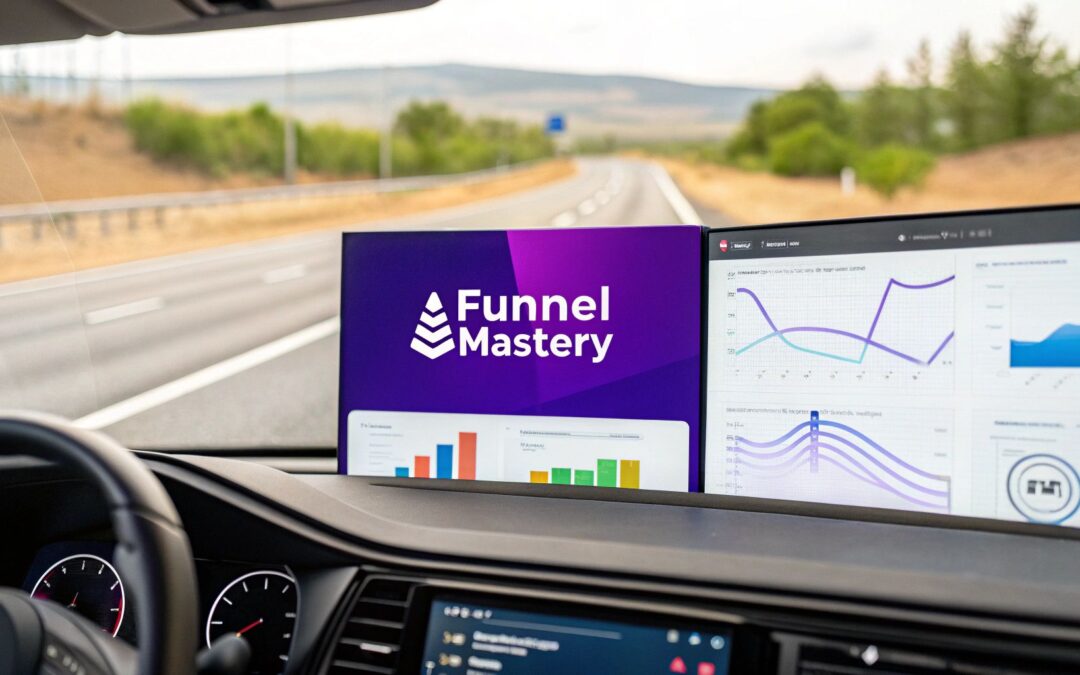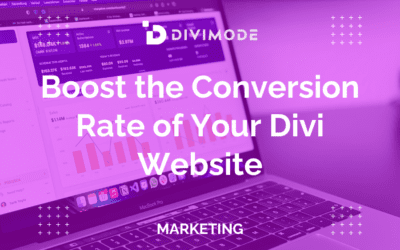A content marketing funnel is the framework that turns strangers into paying customers. It's a strategic roadmap that guides people from their very first interaction with your brand all the way to making a purchase.
This journey is traditionally broken down into three main phases: Top of Funnel (TOFU), Middle of Funnel (MOFU), and Bottom of Funnel (BOFU).
What Is a Content Marketing Funnel?
Think of your content marketing funnel as a structured way to build a relationship. Instead of blasting the same message to everyone, you tailor your content to match exactly where someone is on their path to becoming a customer. It’s all about delivering the right message at the right moment to build trust and guide them forward.
It’s a lot like the journey a window shopper takes. At first, they're just casually browsing with no real goal in mind (Awareness). Then, a specific item catches their eye, and they step inside the store to get a closer look (Consideration). Finally, after examining their options and maybe getting some help from a salesperson, they head to the checkout (Decision). Your content marketing funnel operates on the same principle, using digital content as the helpful guide.
To give you a clearer picture, here’s a quick overview of what each stage of the funnel looks like from a high level.
Quick Overview of Funnel Stages and Goals
| Funnel Stage | Primary Goal | Audience Mindset |
|---|---|---|
| Top of Funnel (TOFU) | Attract and educate a broad audience. | "I have a problem, but I don't know what the solution is yet." |
| Middle of Funnel (MOFU) | Nurture leads and position your brand as the solution. | "I'm researching different options to solve my problem." |
| Bottom of Funnel (BOFU) | Convert leads into customers. | "I'm ready to buy and need to decide which product is best for me." |
This table neatly summarizes the core purpose of each phase, helping you align your content strategy with your audience's needs.
The Evolving Funnel
Of course, the classic three-stage model is a great starting point, but the modern customer journey isn't always so linear. Today's buyers are more informed and take a much more winding path.
Because of this, you’ll see more advanced models emerging. One popular framework is a 7-layer funnel that gets much more granular, breaking the journey into Discovery, Education, Consideration, Validation, Conversion, Implementation, and Amplification. These detailed stages better reflect the real psychological steps a modern buyer goes through.
This diagram shows how your audience is distributed across the funnel—a huge pool of people at the top and a much smaller, highly motivated group at the bottom.
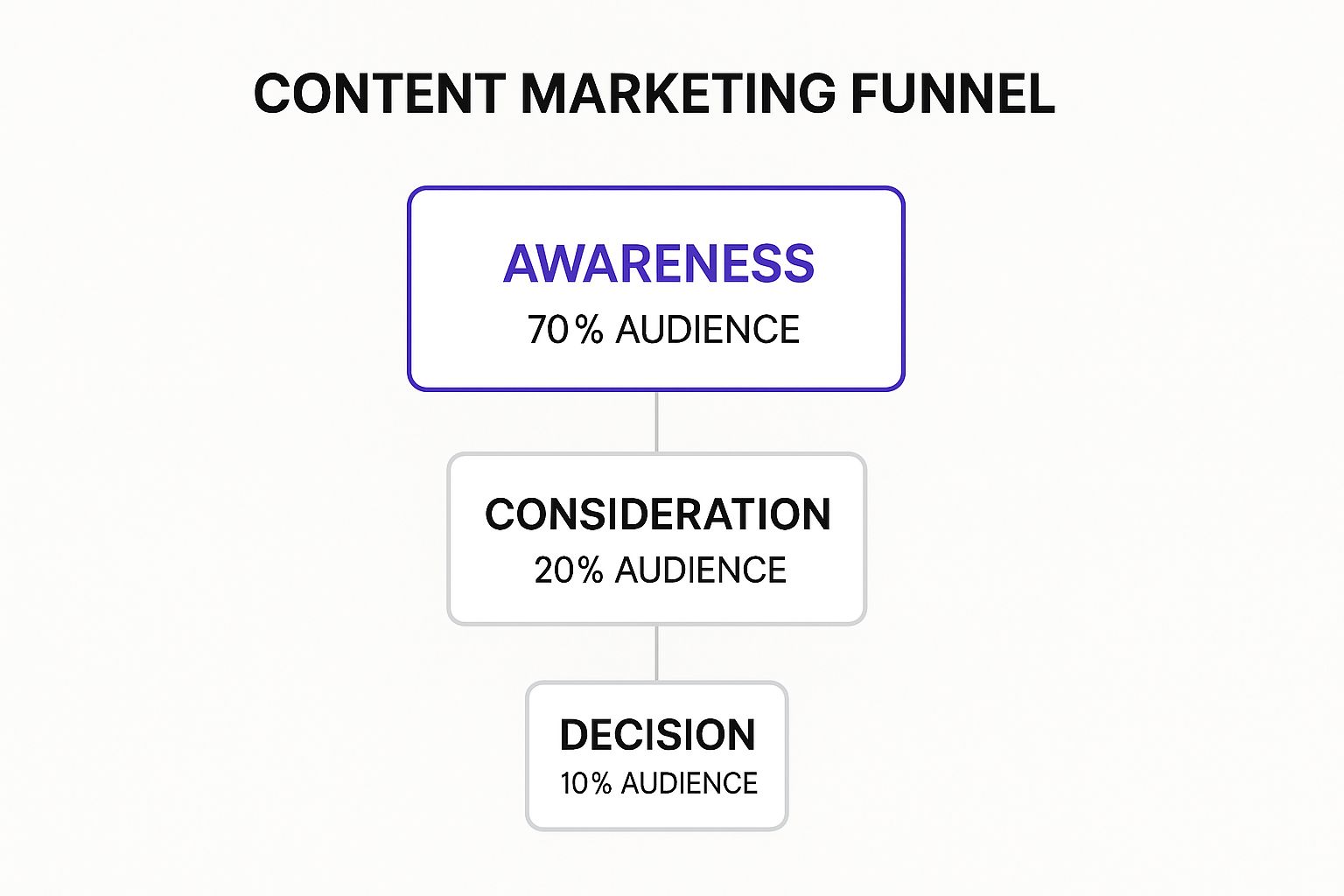
As you can see, the main challenge is to capture the attention of that large, unaware audience at the top and effectively nurture them down toward a purchase. To see exactly how to put this theory into action, check out our guide on how to create a content marketing funnel with Divi.
Top of Funnel (TOFU) Content for Broad Appeal
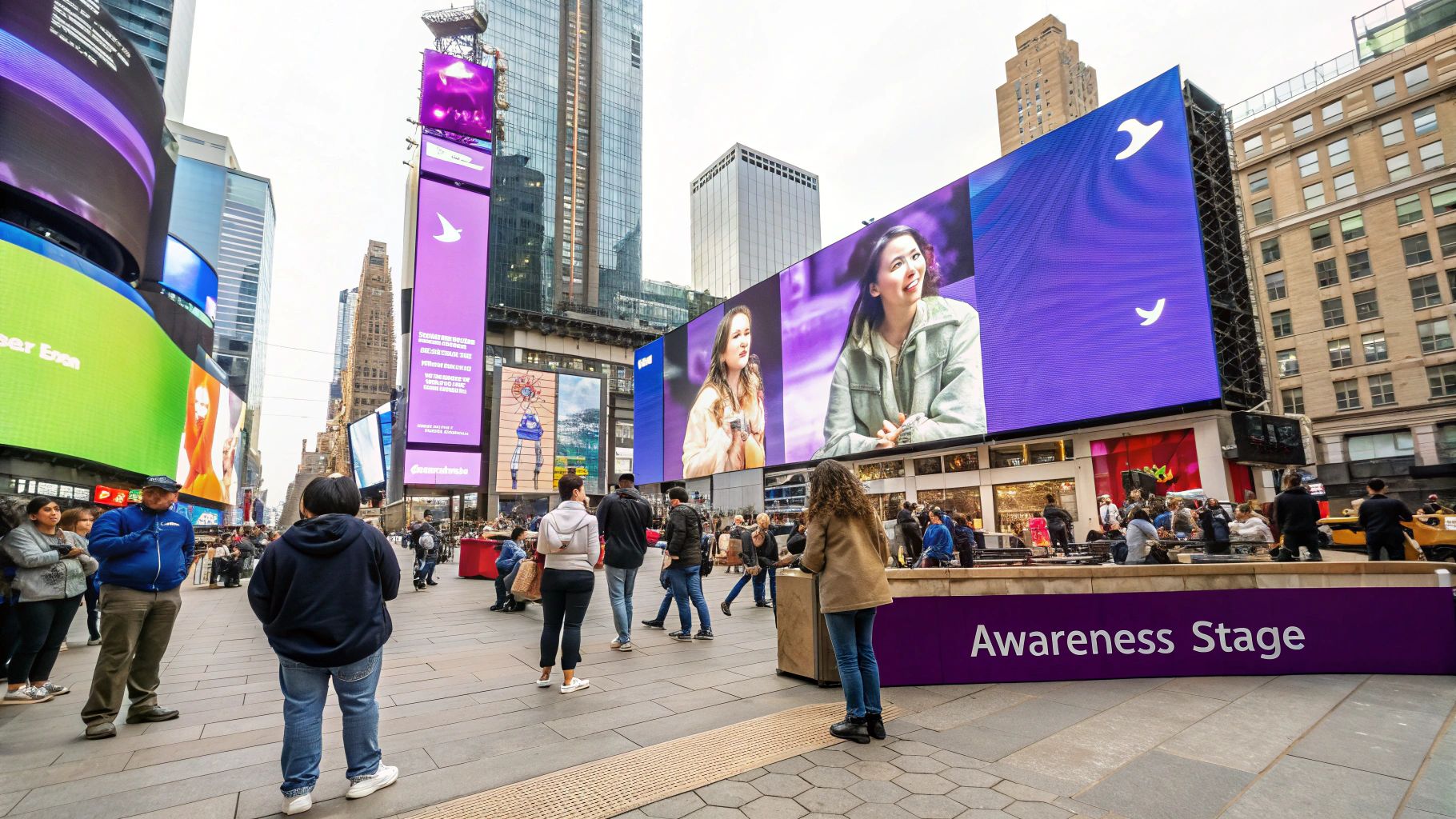
This is where it all begins. The Top of the Funnel, or TOFU, is your first handshake with a potential customer. Think of it as your digital welcome mat. People at this stage aren't hunting for your specific product; they're just starting to explore a problem or a curiosity. They have questions, and your job isn't to sell—it's to be incredibly, genuinely helpful.
The content you create here needs to have the widest possible appeal. It’s designed to draw in a big crowd that shares a common pain point. This is the most crucial of all the content marketing funnel stages because it feeds everything else. If you don't have a steady flow of new faces coming in at the top, the rest of your funnel will eventually run dry.
This is your chance to build brand awareness and stake your claim as an authority. The name of the game is providing massive value with zero strings attached. No aggressive popups, no hard sells, just pure, useful information.
What Is the Goal of TOFU Content?
At the top of the funnel, your main goal is simple: attract and educate. You're trying to get on the radar of your ideal customer profile (ICP) long before they even realize they need a solution like yours.
Your focus should be squarely on:
- Answering Questions: Tackle the fundamental "what is," "how to," and "why" queries that bubble up in your audience's minds.
- Building Brand Awareness: Introduce your brand as a trusted, knowledgeable voice in your field.
- Driving Organic Traffic: Create content that's perfectly tuned for the informational keywords people are typing into search engines.
Success at this stage isn't measured in sales. Instead, you'll be looking at metrics like website traffic, new users, social media engagement, and keyword rankings.
At this stage, you are the friendly expert offering free advice, not the salesperson closing a deal. The trust you build here is the foundation for the entire customer journey.
Best Content Formats for TOFU
TOFU content has to be easy to find, consume, and share. Your audience is browsing, not buying, so you need to grab their attention with something that solves a small, immediate problem or just piques their interest.
Common TOFU Content Types:
- SEO-Driven Blog Posts: These are the absolute workhorses of TOFU. Think articles like "A Beginner's Guide to…" or "5 Common Mistakes in…" that directly answer those informational search queries.
- Engaging Infographics: People love visuals. They make complex ideas easy to understand, are incredibly shareable on social media, and can be a magnet for backlinks.
- Short How-To Videos: A quick, practical video tutorial is a fantastic way to showcase your expertise and deliver instant value, especially for audiences who prefer watching to reading.
- Checklists and Tip Sheets: Simple, downloadable resources that help someone accomplish a specific task are a great, low-friction way to make a first impression.
For instance, a company selling project management software might publish a blog post titled, "How to Improve Team Productivity with Remote Workers." It addresses a real pain point without shoving their software down the reader's throat. To make sure this kind of content gets seen, you can explore strategies like Mastering Influencer SEO to broaden your reach.
Using Divimode for TOFU Content
You can use Divimode to make your TOFU content even stickier. With Popups for Divi, you could offer a related checklist or a link to another helpful article just as a visitor shows they're engaged. It's a gentle nudge, not a push, that keeps them on your site longer and helps build that all-important initial layer of trust.
Middle of Funnel (MOFU) Content for Building Trust

Alright, you’ve grabbed their attention at the top of the funnel. Now what? Prospects are sliding into the Middle of the Funnel (MOFU), and this is where the real work begins. They’re no longer just vaguely aware of a problem; they're actively digging for solutions and sizing up their options. Your job shifts from being a helpful resource to becoming a trusted advisor.
This is where you start building a real relationship. MOFU content is all about proving you not only understand their problem but have a credible, effective way to solve it. The goal is to turn that anonymous visitor into a qualified lead who sees you as the front-runner.
Transitioning From Awareness to Consideration
The biggest change at the MOFU stage is the value exchange. While your top-of-funnel content was free for the taking, MOFU content often sits behind a simple form. You’re asking for an email address in exchange for something more substantial—and that’s a critical step.
When someone gives you their email, they're signaling genuine interest. It's a clear sign they see you as a potential solution, and it’s your chance to prove them right by earning a direct line to their inbox.
The heart of MOFU content is building confidence. You’re guiding prospects, answering their deeper questions, and giving them the detailed information they need to seriously evaluate their choices.
Best Content Formats for MOFU
Your middle-of-funnel content needs to be practical, in-depth, and solution-focused. It’s time to move past the "what" and "why" and get straight to the "how."
- Case Studies: Nothing builds trust faster than proof. Detailed case studies are your secret weapon, showing exactly how you’ve helped real people with similar problems. It’s concrete evidence of your value.
- Webinars: Whether live or recorded, a webinar lets you dive deep into a topic, answer questions directly, and put a human face to your brand. It builds a personal connection that’s hard to replicate.
- Comprehensive Guides or Ebooks: These long-form assets establish you as a true authority. They give you the space to explore a topic in significant detail, leaving no doubt about your expertise.
- Comparison Posts: Don't be afraid to stack your solution up against the alternatives. An honest, transparent comparison that highlights your unique strengths can be a massive credibility booster.
For example, a marketing agency could offer a webinar titled "How to Choose the Right SEO Partner for Your Business." This hits the nail on the head, directly addressing the research phase and positioning the agency as an expert guide. Of course, a key goal of MOFU content is generating solid leads. For a deeper look at different strategies, check out these best ways to generate leads.
In today's B2B landscape, Generative AI has raised the bar. To cut through the noise, you need to deliver content that AI can’t just churn out. Focus on proprietary data, unique insights, and in-depth case studies. This is how you build real authority and stand out.
How Divimode Helps at the MOFU Stage
With Divimode, you can make your MOFU offers impossible to ignore. Using Divi Areas Pro, you can create targeted popups or fly-ins that appear based on specific user actions. Imagine showing a CTA for a hyper-relevant case study right when a user has scrolled 70% of the way down a related blog post. You capture their interest at the exact moment they’re most engaged.
Bottom of Funnel (BOFU) Content for Driving Decisions
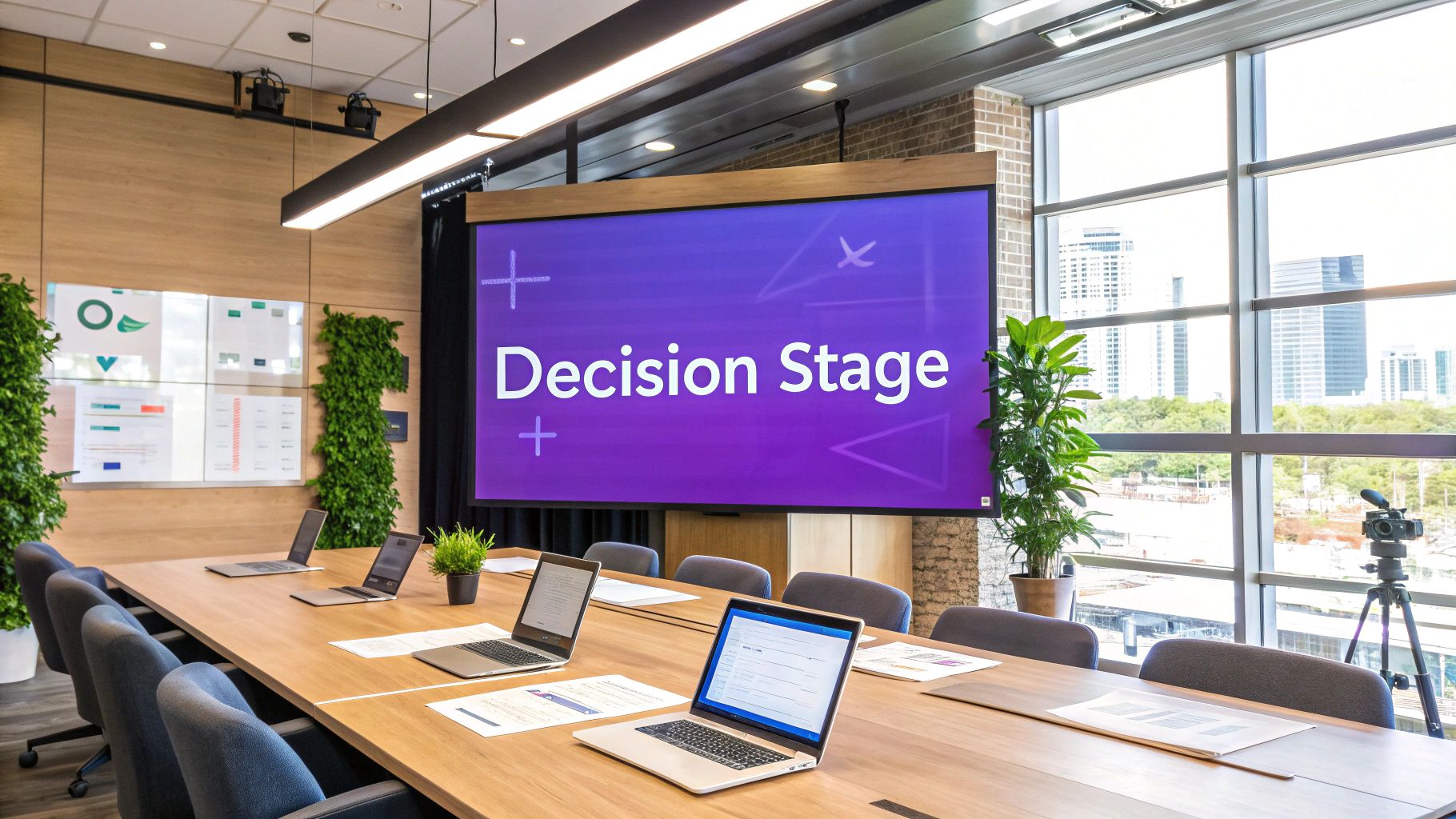
This is it. You've guided your prospects through the initial awareness and deeper consideration phases, and now you’ve reached the finish line of the content marketing funnel: the Bottom of the Funnel (BOFU). People here aren’t just window shopping anymore. They’re ready to buy, and they're actively trying to decide who gets their business.
They're comparing features, scrutinizing pricing, and searching for that one final piece of proof that makes your solution the obvious choice. Your job now is to make that decision feel both easy and incredibly smart. It’s time to shift from broad education to sharp, confident conversion—without ever coming across as pushy.
What Is the Goal of BOFU Content?
The one and only goal at the BOFU stage is conversion. Every single piece of content should be a direct line to the "buy" button. Your focus narrows to knocking down any last-minute hesitations, highlighting what makes you truly unique, and showing off powerful social proof.
Your content needs to directly answer those final, purchase-focused questions swirling in a buyer's mind:
- "Is this really worth the price?"
- "What happens if I need help after I buy?"
- "Who else has used this, and what were their results?"
- "Is this the absolute best tool for my specific problem?"
By now, a buyer has done their homework. In B2B, this often means they've gone through at least six different online sessions, and they need to see a consistent, trustworthy message from you to feel confident enough to commit.
Best Content Formats for BOFU
Bottom-of-funnel content has to be laser-focused and ready for action. It’s all about giving high-intent leads that final nudge they need to make the leap.
BOFU content is all about justification. It gives prospects the data, proof, and confidence they need to not only make the purchase but also feel great about their decision.
Here are the heavy hitters for driving decisions:
- Customer Testimonials and Reviews: Nothing beats authentic stories from happy customers. They offer the social proof someone needs to feel secure in their choice.
- Detailed Case Studies: While case studies are also great for the middle of the funnel, here they need to be all about the ROI. Focus on hard numbers and measurable results that prove the tangible value you deliver.
- Product Demos and Free Trials: Sometimes, seeing is believing. Letting a prospect get their hands on your product removes all the guesswork and lets its value do the talking.
- Transparent Pricing Pages: A clear, easy-to-digest pricing page is non-negotiable. It needs to break down exactly what’s in each plan so prospects can choose the right fit without any confusion.
- Strong Calls-to-Action (CTAs): No more soft-sells. Your CTAs must be direct and compelling. Think "Start Your Free Trial" or "Request a Personalized Demo."
These formats work because they put your product front and center. Of course, for people to find them, your site needs a solid technical foundation. If you need a refresher, check out our guide on the 5 SEO basics every website needs.
How Divimode Helps at the BOFU Stage
Divimode’s tools are built to help you seal the deal at this crucial final stage. With Divi Areas Pro, for instance, you can set up an exit-intent trigger on your pricing page. Just as a visitor is about to leave, you can present a last-chance special offer or a link to book a quick demo.
That single, well-timed interaction can be the difference between a lost lead and a loyal new customer.
Look, making a sale is a huge win. But if you think that's the end of the line, you're leaving a ton of value on the table. The real magic happens after the purchase. This is where you stop just selling to someone and start building a real relationship.
The classic content marketing funnel stages are all about getting that initial conversion. Smart brands, however, know that the post-purchase phase is where you forge true loyalty. Your goal shifts from just making a sale to nurturing retention and advocacy. You’re no longer trying to convince someone to buy—you’re proving their decision was a brilliant one and welcoming them into your world.
When you get this right, you kickstart a powerful "flywheel" effect. Your happy, engaged customers become your best salespeople, feeding new, high-quality prospects right back into the top of your funnel.
Turning Customers into Brand Advocates
The whole game at this stage is to keep delivering incredible value long after they've clicked "buy." You want every customer to feel like they just joined an exclusive club.
So, what does that look like in practice?
- Detailed Onboarding Materials: Don't just dump a product on them and walk away. A smooth start is everything. Think step-by-step video tutorials, a warm welcome email series, and easy-to-follow setup guides. A great onboarding experience immediately crushes any buyer's remorse.
- Exclusive Customer-Only Content: Make them feel special. Offer advanced tips, host live Q&A sessions with your experts, or give them a sneak peek at new features. This stuff rewards their loyalty and keeps them plugged into your ecosystem.
- Community-Building Initiatives: People love to belong. Set up a private forum, a dedicated Slack channel, or a Facebook group. This is where your customers can connect, swap strategies, and learn from each other—and from you. It builds an incredible sense of community.
A customer who feels seen and supported after they've paid is infinitely more likely to rave about you to their friends. Your post-purchase content is what fuels word-of-mouth marketing.
And this isn't just fluffy feel-good stuff; it has a real impact. For customer retention, post-purchase content like in-depth tutorials and active community forums can reduce churn by up to 25%. It constantly reinforces the value of their purchase and turns a simple transaction into a long-term partnership. You can dig into more research on how content shapes the entire customer journey by exploring these insights on B2B content marketing funnels on properexpression.com.
Activating Your Customer Base
Once you've built up all that goodwill and loyalty, you can't just sit back and hope they'll start singing your praises. You need to give them a microphone and a stage. In other words, make it incredibly easy for them to share their positive experiences.
Create clear, structured programs that turn happy customers into active promoters:
- Launch a Referral Program: Give them a real reason to spread the word. Offer tangible rewards like a discount, an account credit, or some cool swag for every new customer they refer. The key is to make it dead simple with a unique, shareable link.
- Encourage Reviews and Testimonials: Don't be shy—ask for feedback! After a customer has a great interaction or hits a milestone with your product, trigger an automated email asking for a review on a site that matters to you. Then, splash those glowing testimonials all over your website.
- Promote User-Generated Content (UGC): Get your customers to show off how they use your product. Run a fun contest or create a branded hashtag for social media. Featuring their content is the ultimate form of social proof—it's authentic, trustworthy, and incredibly powerful.
How Divimode Powers the Post-Funnel
This is where you can really bring your retention strategy to life with Divimode. For example, you can use Divi Areas Pro to show targeted messages that only logged-in customers can see.
Use it to offer them exclusive access to premium content or to drop a direct invitation to join your private community. It's a simple but highly effective way to make every single customer feel like a VIP, closing the loop and turning your funnel into a growth engine that fuels itself.
Common Questions About Content Funnels
Even when you've got a solid grasp of the content marketing funnel stages, things can get a little fuzzy once you start trying to build one yourself. It's totally normal. Let's walk through some of the most common questions that pop up, so you can move from theory to action with confidence.
Getting your funnel strategy right is all about delivering the perfect solution at the exact moment your audience needs it.
How Do I Choose Content For Each Funnel Stage?
The real secret here is to stop thinking about your goals and start thinking about your customer's goals. What are they trying to figure out or achieve at each step of their journey? Match your content to that intent.
- Top of the Funnel (TOFU): At this point, your audience is just exploring. They have questions and are looking for answers. Think broad, educational topics. Create content for keywords like "what is project management" or "how to improve team productivity." The goal is simply to be helpful, not to make a sale.
- Middle of the Funnel (MOFU): Okay, now they know a solution exists, and they're starting to weigh their options. This is where you help them compare and evaluate. Content targeting "best tools for remote teams" or "Asana vs. Trello" works wonders. Case studies and webinars are also incredibly effective here.
- Bottom of the Funnel (BOFU): They're on the verge of making a decision. Your content now needs to be super-specific and build trust in your brand. Focus on transactional or branded keywords like "[Your Brand] pricing" or "request a demo." Customer testimonials and detailed feature breakdowns are what seal the deal.
How Can I Measure My Funnel's Success?
You can't fix what you can't see. The key is to track metrics that actually matter for each stage, not just vanity numbers. This gives you a complete picture of your funnel's health and shows you exactly where the leaks are.
For instance, at the top, you're just looking for broad reach and engagement. But as people move down, your focus naturally shifts to the quality of your leads and, finally, to sales.
A successful funnel isn’t just about the final conversion. It's about how efficiently you guide people through the entire journey. Your lead-to-customer conversion rate is the ultimate goal, but the KPIs at each stage are what show you how to get there.
Here’s a simple way to look at it:
| Funnel Stage | Key Performance Indicators (KPIs) |
|---|---|
| TOFU | Organic Traffic, New Users, Keyword Rankings, Social Engagement |
| MOFU | Lead Magnet Downloads, Webinar Sign-ups, Lead Conversion Rate |
| BOFU | Demo Requests, Free Trial Sign-ups, Sales, Customer Acquisition Cost |
Getting a handle on these numbers is a game-changer. For a deeper look, we've got some great ideas in our guide with tips to boost your WordPress conversion rate.
Can One Piece Of Content Serve Multiple Stages?
Absolutely, and you should definitely do this! Creating versatile content is one of the smartest things you can do. Think about a massive, in-depth guide or a pillar page. It can attract a ton of TOFU traffic from people searching for general information.
But then, within that same article, you can strategically place calls-to-action (CTAs)—like an offer for a downloadable checklist or an invite to a webinar on the same topic. Just like that, you're capturing MOFU leads from the very same piece of content. This kind of dual-purpose strategy squeezes every drop of value from your hard work.
Ready to turn your website visitors into loyal customers? With Divimode, you can build a powerful content marketing funnel right inside Divi. Use Divi Areas Pro to create targeted popups, fly-ins, and offers that guide users from one stage to the next.
Start building your high-converting funnel today with Divimode
